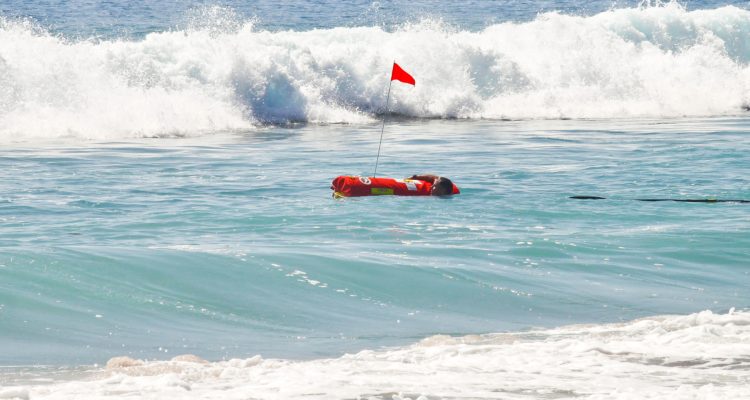Nanoplatelets are also aligned along the pump wall and exit nozzle walls for maximum abrasion resistance to slurry, and the propulsion system uses sealed alumina/zirconia ceramic composite bearings. Mulligan asserts this ceramic composite is so hard that if sand or rocks enter the bearings – an event that would quickly destroy metal bearings – the ceramic composite bearings can use them for lubricant. GFRP screws and bolts are also used throughout the boat to reduce corrosion. Once constructed, each aquatic drone is painted with the same yellow epoxy paint used for sea planes, then covered with a red marine-grade cloth flotation bag.
EMILY’s combination of advanced composites has multiple advantages, including extreme durability. “It’s meant to last a long time for rigorous use by first responders in very harsh conditions,” says Mulligan. The materials also make the drone extremely lightweight – between 24 and 36 pounds, depending on add-ons that include searchlights, loudspeakers, two-way radios and sonar systems.
Weighing less than 50 pounds when packed in its golf bag-sized case, EMILY can also be checked as airline baggage. This makes it possible for a Hydronalix team to rush the aquatic drone to global emergencies. Most recently, the company sent a sonar-enabled aquatic drone to the Abaco Islands in the Bahamas to map the debris-strewn harbor after Hurricane Dorian so first aid ships could safely enter. EMILY mapped the harbor in a few hours, allowing a medical ship to enter the harbor within hours instead of several days. In another deployment, two aquatic drones rescued 360 Syrian refugees off the coast of Greece in a single week.
With hundreds of thousands of drownings annually, Mulligan would like to see his company’s aquatic drones available on every pier, beach and ship just as manual life rings currently are. Hydronalix is now partnering with Robin Murphy, a professor in the Department of Computer Science & Engineering at Texas A&M University, to develop artificial intelligence that will give EMILY the ability to find those in distress without remote control, which will free up first responders for triage or other rescue tasks.
For now, Mulligan is proud of EMILY’s success and its role as an ongoing tribute to its namesake, his daughter’s 13-year-old friend who was killed in an accident while the company was developing the technology.
“We had this invention, and everyone was so distraught that we decided to name it after her,” says Mulligan. “She always wanted to help people, and that is the mission of this boat drone – to help people in need.”


